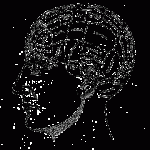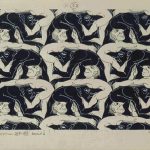[Part 7 of 12: 1) The science of the artificial 2) function, behaviour structure 3) form follows function, 4) no function in structure, 5) the medium is the message 6) types and schemas 7) aesthetics: attractive things work better 8) managing (great) expectations 9) colour 10) styles and standards 11) design solution spaces 12) conclusions]
Attractive things don’t necessarily work better but we humans perceive them as doing so because we are more forgiving if an artefact or a person is good looking because they light up the brain’s reward centre and make us feel better when we are around them. We are attracted to attractive things.
A thing of beauty is a joy forever
There are many patterns which we find inherently pleasing:
The golden ratio is a pattern which appears in nature and art. It has two segments with the ratio of 0.618 between them. It has been used in designs such as the Stradivarius, the iPod, and da Vinci’s Vitruvian Man.
The rule of thirds is the golden ratio’s rough approximation. Using grids to design a layout, divide the design into a 3×3 grid layout and put the most interesting parts on the intersections and not in the middle row of squares. The asymmetry creates a design which is considered aesthetically pleasing.
Similarly, the Gutenberg diagram divides a display into four and assumes we read it from the top left hand corner to the bottom right from left to right. So, the main area to look at is the top left, the top right and bottom left are referred to as fallow areas – meaning there is less focus here, and the whole thing ends in the bottom right.
Unity in variety
Gestalt theory is the study of how humans recognise and interpret patterns and is the result of research carried out by German psychologists in the 1920s. Their works shows that we interpret things in space and give them meaning:
- Proximity: items close together are in a group together.
- Similarity: items which look similar are together.
- Continuity: lines as continuous, even if they are not.
- Closure: incomplete regular shapes as complete.
- Figure and ground: the figure in the foreground must be more important than the background.
We prefer symmetry, balance, consistency and alignment when we look at design solutions. The law of Prägnanz asserts that we will interpret images in the simplest way possible, ignoring noise and clutter. So, misaligned items may get ignored.
These ideas and more many more similar ones underpin graphic design and the design of 2D graphical-user interfaces, Designers challenge these ideas if they want to create tension which may lead to something cool or something disastrous.







7 comments